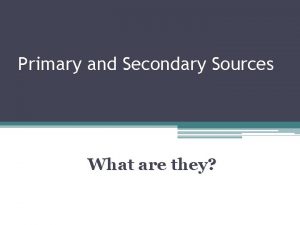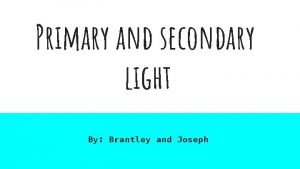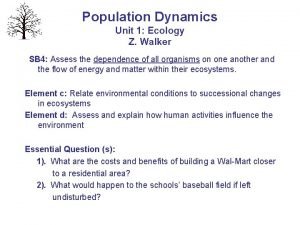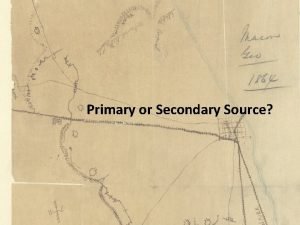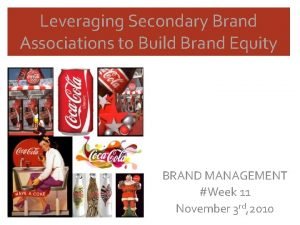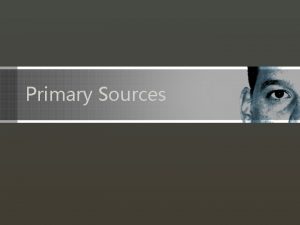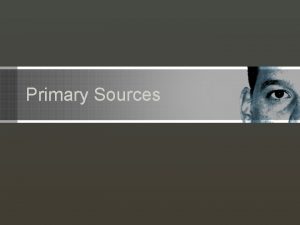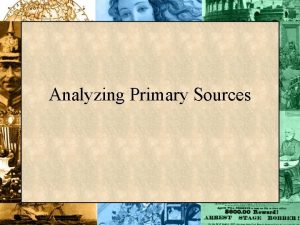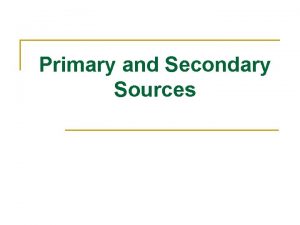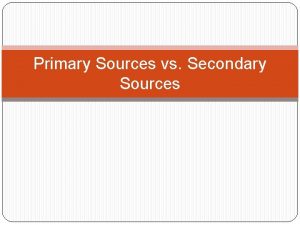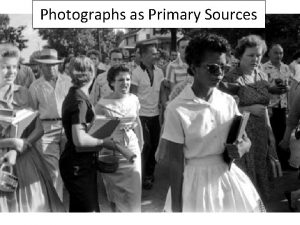Primary Secondary Sources Primary Sources First hand accounts










- Slides: 10

Primary & Secondary Sources

Primary Sources: First hand accounts of an event, person or place. Examples of a primary source include: autobiography, picture, video, letter, journal

Pro's and Con's of Primary Sources What are the benefits to a Primary Source? Emotional connection First-hand experience or perspective Historical context provided What are the drawbacks to a Primary Source? Biased! Only one side of the story, not the full picture May not be accurate

Secondary Sources: A second hand account of an event, person or place. Examples of secondary sources include: biography, textbook, encyclopedia, magazine

Pro's and Con's of Secondary Sources What are the benefits to a Secondary Source? Massive amount of sources Objective view of the subject Historical background What are the drawbacks to a Secondary Source? Bias! More general than specific Accuracy on the subject

Are the following a primary or secondary source? 1. Letter 2. Biography 3. Photograph 4. Textbook 5. Encyclopedia 6. Journal 7. Autobiography 8. Video 9. Newspaper 10. Magazine


Primary Source Definition: Example: Secondary Source Definition: Example:

Primary Source Document A: Captain Thomas Preston's Account of the Boston Massacre(13 march 1770) On a freezing March day in 1770, one of the king's soldiers was looking for work to earn some extra money. Someone started making fun of him and told him to get a job cleaning toilets [. . . ] One thing led to another and there was a fight. That started things. Soon a noisy, jeering group of mischiefmakers gathered in front of the Boston Customs House. They began pushing and shoving and throwing stones and pieces of ice at the British sentry. He got knocked down and he called for help. Captain Thomas Preston came to the rescue with eight British soldiers. There is some confusion about what happened next. The mob is said to have taunted the redcoats yelling, "Fire!" Captain Preston is said to have yelled, "Hold your fire!" Then the British soldier was hit with a big stick. He said he heard the word, "fire, " so fired his gun into the crowd. The street gang moved forward; the redcoats panicked and fired at unarmed people. Five Americans died; seven were wounded. None of them was a hero. The victims were troublemakers who got worse than they deserved. The soldiers were professionals. . . who shouldn't have panicked. The whole thing shouldn't have happened. From Hakim, J. (1993). From colonies to country (pp. 64 -65). New York: Oxford University Press.

Secondary Source The Boston Massacre was a street fight that occurred on March 5, 1770, between a "patriot" mob, throwing snowballs, stones, and sticks, and a squad of British soldiers. Several colonists were killed and this led to a campaign by speech-writers to rouse the ire of the citizenry. Copyright © 1999 -2013 by the Independence Hall Association, a nonprofit organization in Philadelphia, Pennsylvania, founded in 1942. Publishing electronically as ushistory. org. On the Internet since July 4, 1995.
 Primary secondary and tertiary sources
Primary secondary and tertiary sources Autobiography is a primary source
Autobiography is a primary source What are the primary and secondary sources of light
What are the primary and secondary sources of light Ecological succession worksheet answers
Ecological succession worksheet answers What is the primary source of light on earth
What is the primary source of light on earth Print and web sources
Print and web sources Sources of water sources of water
Sources of water sources of water Syndicated panel surveys
Syndicated panel surveys Primary evidence vs secondary evidence
Primary evidence vs secondary evidence Secondary sources meaning
Secondary sources meaning Secondary associations brand examples
Secondary associations brand examples

